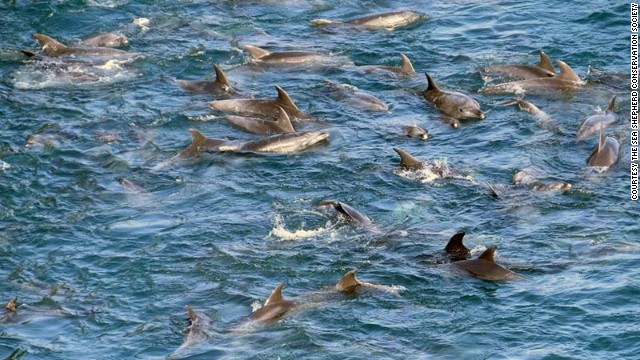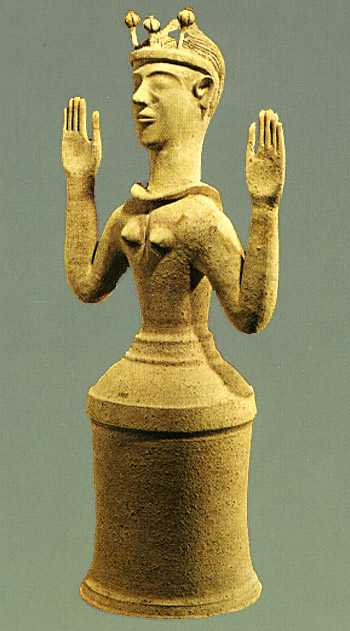Was showing another user in his symbols thread:
http://en.wikipedia.org/wiki/User:Jw...n_intelligence
Speculative claims and unconfirmed information
According to Carol J. Howard, author of Dolphin Chronicles (1996), each of the two dolphin sub-brains has an independent blood supply. The two eyes of the dolphin are each connected to one of the two sub-brains.
It is possible that, if they have two brains, dolphins never sleep with both brains at once. One brain sleeps while the other brain stays awake (perhaps so that the dolphins can breathe while asleep): this may account for the lack of REM sleep brain waves among dolphins.
It has been long theorised that dolphins have a complex language, which may consist of visual symbols as interpretations of high frequency sound waves (see synaesthesia). Many scientists feel there is too little evidence for this claim, although some believe it is justified.
http://www.molecularautism.com/content/4/1/40
Background
Synaesthesia is a neurodevelopmental condition in which a sensation in one modality triggers a perception in a second modality. Autism (shorthand for Autism Spectrum Conditions) is a neurodevelopmental condition involving social-communication disability alongside resistance to change and unusually narrow interests or activities. Whilst on the surface they appear distinct, they have been suggested to share common atypical neural connectivity.
Methods
In the present study, we carried out the first prevalence study of synaesthesia in autism to formally test whether these conditions are independent. After exclusions, 164 adults with autism and 97 controls completed a synaesthesia questionnaire, Autism Spectrum Quotient, and Test of Genuineness-Revised (ToG-R) online.
Results
The rate of synaesthesia in adults with autism was 18.9% (31 out of 164), almost three times greater than in controls (7.22%, 7 out of 97, P <0.05). ToG-R proved unsuitable for synaesthetes with autism.
Conclusions
The significant increase in synaesthesia prevalence in autism suggests that the two conditions may share some common underlying mechanisms. Future research is needed to develop more feasible validation methods of synaesthesia in autism.
http://www.dolphinassistedtherapy.co...py_results.htm
THE DOLPHIN ASSISTED THERAPY RESULTS.
Voiceprint of the dolphin AnitaWe have developed a rehabilitation system for patients suffering from neurological disorders (in adults- chronic fatigue syndrome, in children - conditions brought about by a negative influence of the environment, enuresis, logoneuroses, phobias, depression, neurosthenia, infantile autism syndrome and cerebral palsy) based mainly on the contact of the patients with specially trained Black Sea bottlenose dolphins.
1 The Black Sea bottlenose dolphin is the natural factor that exerts a healing effect on patients suffering from neurological disorders, mainly with a strong psychogenic component of the pathogenesis.
2. The employment of the dolphin for therapeutic purposes is based on its positive attitude towards humans; desire to establish contact, ease of training and control, exotic appearance, large size and the ability to conduct treatment in an aquatic environment.
3. The healing effect of the dolphin is realized most completely in a multilink system, doctor-coach-dolphin-patient. The process of therapy consists of several stages, such as psychological preparation of the patient, contacts between the patient and the dolphin, relaxing procedures after the contact and supportive psychotherapy after the course of direct dolphin-patient interactions has ended. The optimal period for the patient's direct involvement with the patient is 15-20 minutes once a day for a period of 7-10 days.
4. The established mechanisms of dolphin therapy are: emotional stress with an elevation of psychological and physical activity of the patient and his or her responsiveness to external influences, including those of psychotherapeutic nature, retardation of pathological neuropsychological dominances and a formation of a positive attitude, improvement of psychological status and psychosomatic self-control, decrease in the strength of vegetative regulatory mechanisms.
5. A system of prognosis of treatment outcomes has been developed, based on the behavior of the patient towards the dolphin during a test contact and an evaluation of the readiness of the dolphin to participate in a therapy session, based on its feeding activity and breathing rhythm.
6. Dolphin therapy for patients suffering from chronic fatigue syndrome enables to reach significant improvement in 65.9±2.4% of cases in men and in 81.5±3.8% of cases in women. With thalasso therapy without a dolphin, improvement levels are at 30.1±2.9% for males and 60.5±2.7% for females, which is significantly (P<0.05) lower than with dolphin therapy.
7 Children 5-10 years of age with neurological disorders associated with negative environmental influences showed a decrease of minimal brain dysfunction in 62.9 to 87.2% of cases, depending on the patient's age. In children between 7 and 10 years of age, the therapeutic effect was also manifested in decrease of headaches. The use of thalasso therapy resulted in significantly lower (P<0.01) improvement rates of 42.7 to 57.6%.
8. Dolphin therapy of children between 5 and 12 years of age suffering from enuresis leads to a significant decrease of involuntary urination episodes. It is especially effective in the 5-6 year age group where improvement levels reach 90.5±1.3%, in comparison with 30.1±2.3% using thalasso therapy alone (P<0.001).
9. The dolphin therapy course in children between 5 and ten years of age suffering from logo neurosis, supplemented by special "dolphin breathing" exercises resulted in speech improvement in 75.9±4.6% of cases (P<0.001) directly after the conclusion of the therapy and in 90.1±3.1% (P<0.001) when long-term effects are taken into account. Thalasso therapy without the dolphin resulted in no significant improvement.
10. In children suffering from phobias, 88.2±4.5% (P<0.001) of patients showed significant improvement, with persistent remission observed in 67.2±1.5% (P<0.001). The use of thalassotherapy alone did not result in significant levels of improvement.
11. The fraction of children between 5 and 15 years of age with considerable decrease of clinical signs of depression after dolphin therapy varies from 52.3±1.5% and 61.7±2.3%, depending on the age group. Thalasso therapy alone resulted in improvement levels of 10±1.4% to 23.1±2.3% of cases, which is significantly lower (P<0.05).
12. Dolphin therapy of children suffering from neurasthenia, leads to marked improvement in their condition in 78.4±2.4% of cases (P<0.001). Thalasso therapy alone does not have a statistically significant effect.
13. Dolphin therapy exerts a considerable healing effect on children between 5 and 10 years of age afflicted with infantile autism syndrome. Clinical improvement with respect to day symptoms (autism, auto stimulation, conservative behavior) was observed in different age subgroups in 64.8-82.6% of cases. With respect to night symptoms (sleep disorders, enuresis, ritual behavior, aggressiveness) the improvement was observed in 74.3-88.2% of cases. Thalasso therapy without involvement of dolphins gave no significant improvement.
14. Dolphin therapy had effected on the main clinic manifestations of the children suffering from cerebral palsy but significantly improved patients' psychological status and social adaptation.
http://www.pbs.org/wnet/nature/episo...n-healing/859/
With their curious nature and trademark “smile” — formed by delicately curved jaws — dolphins have become the symbol of the friendly playmate of the sea. Indeed, as NATURE’s Wisdom of the Wild shows, some dolphins do seem to form special attachments with people — including disabled children who fail to respond to other kinds of therapy.
Some parents, in fact, say the chance to swim with captive dolphins has changed their child’s life. Withdrawn autistic children, for instance, have responded to the marine mammals in remarkable ways — forging bonds that have proved difficult with human playmates. The idea, say psychologists familiar with the technique, is that the promise of swimming with such a large and fascinating creature provides an incentive to try different — and sometimes difficult — therapeutic tasks.
One of the prime movers behind Dolphin Human Therapy, as it is known, is David Nathanson, a clinical psychologist living in Florida. In the late 1970s, he used the reward of swimming with dolphins to motivate children with Down’s syndrome to learn. He found that the children who worked with dolphins learned up to four times faster — and remembered more of what they learned — than those in conventional classroom settings.
In the 1980s, “Dr. Dave,” as he became known, organized a dolphin-assisted therapy program in the Florida Keys that eventually grew into a full-fledged center in Key West. Since 1994, it has worked with children from over 37 states and 20 countries.
While some researchers dispute the effectiveness of the program, others say the work with dolphins parallels the success of other animal therapy programs, which use everything from pet mice to racehorses to help people cope with problems in their lives. But dolphin therapy can be prohibitively expensive. To address that problem, Nathanson and others are working on creating a “virtual dolphin experience,” which recaptures the joy and freedom of swimming with the animals using video and computer technologies. If successful, virtual dolphins will eventually allow some children to get at least part of the thrill of the experience without leaving home.
http://edition.cnn.com/2014/01/19/wo...t=hp_inthenews
Group: Stressed, bloody dolphins await slaughter in Japan's Taiji Cove
By Laura Smith-Spark, CNN
January 19, 2014 -- Updated 1713 GMT (0113 HKT)

- Home
- Forum
- Chat
- Donate
- What's New?
-
Site Links

-
Avalon Library

-
External Sites

- Solari Report | Catherine Austin Fitts
- The Wall Will Fall | Vanessa Beeley
- Unsafe Space | Keri Smith
- Giza Death Star | Joseph P. Farrell
- The Last American Vagabond
- Caitlin Johnstone
- John Pilger
- Voltaire Network
- Suspicious Observers
- Peak Prosperity | Chris Martenson
- Dark Journalist
- The Black Vault
- Global Research | Michael Chossudovsky
- Corbett Report
- Infowars
- Natural News
- Ice Age Farmer
- Dr. Joseph Mercola
- Childrens Health Defense
- Geoengineering Watch | Dane Wigington
- Truthstream Media
- Unlimited Hangout | Whitney Webb
- Wikileaks index
- Vaccine Impact
- Eva Bartlett (In Gaza blog)
- Scott Ritter
- Redacted (Natalie & Clayton Morris)
- Judging Freedom (Andrew Napolitano)
- Alexander Mercouris
- The Duran
- Simplicius The Thinker




 Reply With Quote
Reply With Quote .
.


 hehe
hehe











Bookmarks